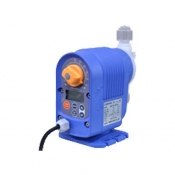Water Treatment Plant
Water Treatment Plants (WTP) are designed to treat and purify water, making it safe for drinking, industrial use, and other uses. The treatment process varies based on the water source, the level of contamination, and the specific needs of the user. WTP systems are tailored to provide clean, potable water by removing contaminants such as, dissolved/suspended impurities or microbes. The various types of clean water treatments in a WTP can be chosen based on the specific requirements, such as iron removal, hardness reduction, demineralization, drinking or rainwater harvesting.
Types of Water Treatment Plants (WTP):
- Iron Removal Plant (IRP)
Iron Removal Plants are designed to treat water with a high iron content. These plants use oxidation and filtration processes to remove iron from water, ensuring that the water is free of iron impurities that can cause discoloration, staining, and taste issues. Iron removal ensures the water quality is improved for consumption and industrial uses. - Softener Plant (SP)
Softener Plants are used to remove hardness from water, primarily caused by calcium and magnesium ions. These plants use ion exchange processes to replace hardness-causing minerals with sodium or potassium ions, making the water suitable for domestic and industrial applications, preventing scale buildup in pipes and boilers. - Demineralization Plant (DM Plant)
Demineralization Plants are designed to remove all dissolved salts and minerals from water. This is typically achieved through ion exchange, reverse osmosis, or other filtration technologies. Demineralized water is ideal for industries that require ultra-pure water, such as in the pharmaceutical, electronics, and power generation sectors. - Rain Water Harvesting Plant (RWH)
Rainwater Harvesting Plants capture and store rainwater, making it usable for non-potable applications such as irrigation, cooling, and sanitation. In some cases, the water can also be treated for potable use. This eco-friendly solution helps conserve water resources and reduce dependence on traditional water supply systems. - Drinking Water Plant (RO)
Reverse Osmosis (RO) Drinking Water Plants are designed to produce high-quality drinking water by removing dissolved solids, chemicals, and impurities through the process of reverse osmosis. These plants use semi-permeable membranes to filter out contaminants from the water, making it safe and healthy for human consumption. RO systems are ideal for areas with brackish or highly contaminated water sources and are widely used in both household and industrial applications for drinking water purification.
Published on: Tuesday, 6 May 2025, 02:39 pm ▪ Last update: Wednesday, 7 May 2025, 05:11 pm ▪ Total View of this Page: 128


.png)

